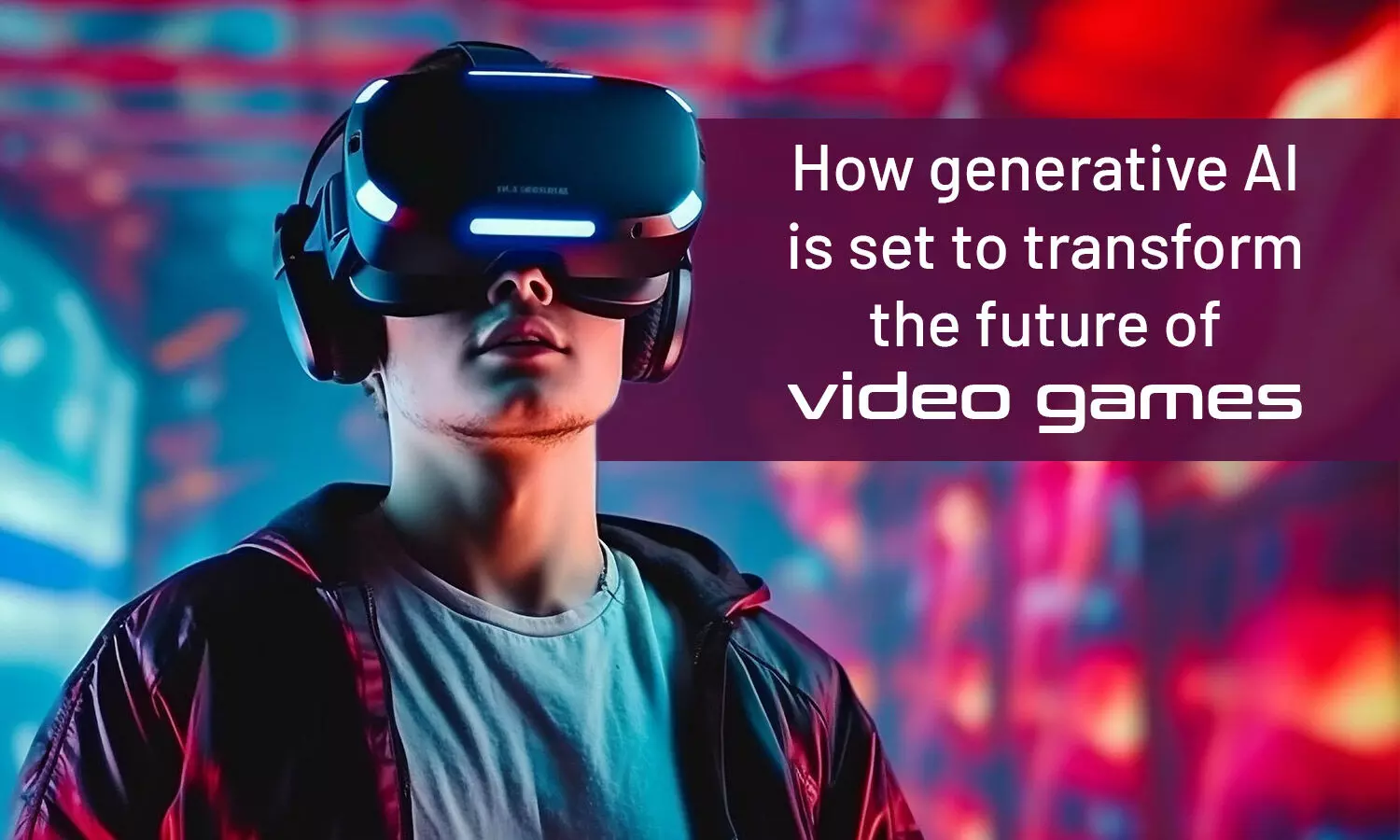Levelling up: How generative AI is set to transform the future of video games
Imagine it's the early 90s, and Mario is the biggest star in the video game world. Gamers everywhere are glued to their screens, navigating the pixelated hero through simple, yet addictive levels. The excitement of jumping on Goombas and collecting coins is unparalleled. Fast forward to today, and the gaming landscape has evolved into something almost unrecognisable—complex, immersive worlds with realistic graphics, intricate storylines, and characters that feel alive. Now, the industry is on the brink of another major transformation, one driven by the rise of generative AI.
Levelling up: How generative AI is set to transform the future of video games

Generative AI, a technology that can create content from scratch, is poised to redefine video game development. In the next 5 to 10 years, industry executives believe that AI could manage more than half of the game development process. This doesn't just mean faster production times, but the potential for more detailed, personalised, and immersive experiences than ever before.
Already, AI is being used in the pre production stages, helping developers plan out game content and create concept art. Blizzard Entertainment, for example, has developed Blizzard Diffusion, an AI tool that generates concept art inspired by its own hit titles like World of Warcraft. But this is just the beginning. As AI continues to evolve, it could soon play a key role in generating entire storylines, designing non-playable characters (NPCs), and even creating vast, dynamic game environments.
One of the most exciting possibilities is the creation of limitless, interactive stories tailored to each player. Imagine an RPG where every decision you make alters the storyline in a unique way, or an open-world game where the environment evolves based on your actions. Chinese game publisher NetEase is already exploring this potential, planning to use AI to generate NPC dialogue in the upcoming mobile version of its game Justice Online.
However, while AI offers incredible potential, it also presents challenges. The technology may free developers from mundane tasks like coding and content creation, but it won't replace the creative spark that makes games truly enjoyable. Executives in the industry are clear on one point: AI is a tool, not a replacement for human creativity. There are also concerns about intellectual property rights and the complexities of integrating AI into existing game engines and development tools.
Moreover, despite AI's potential to speed up production and improve quality, it's unlikely to solve the industry's ongoing talent shortage. The demand for skilled developers, designers, and artists remains high, and while AI might alleviate some of the workload, the need for human creativity and oversight is more critical than ever.
For game developers, the key to harnessing AI’s potential lies in taking a disciplined and strategic approach. This means developing clear strategies for AI implementation, carefully deciding when to build in-house solutions versus partnering with external AI providers, and always keeping the player's experience at the forefront. After all, the goal is still to create fun, engaging games—not to overwhelm players with content just because AI makes it possible.
The video game industry stands at a crossroads, much like it did in the 90s when Mario was leading the charge into a new era of gaming. Today, it’s generative AI that promises to take us into the future, offering the potential to create games that are bigger, more immersive, and more personalised than ever before. But as with any tool, it's how developers choose to use it that will ultimately determine its impact.

